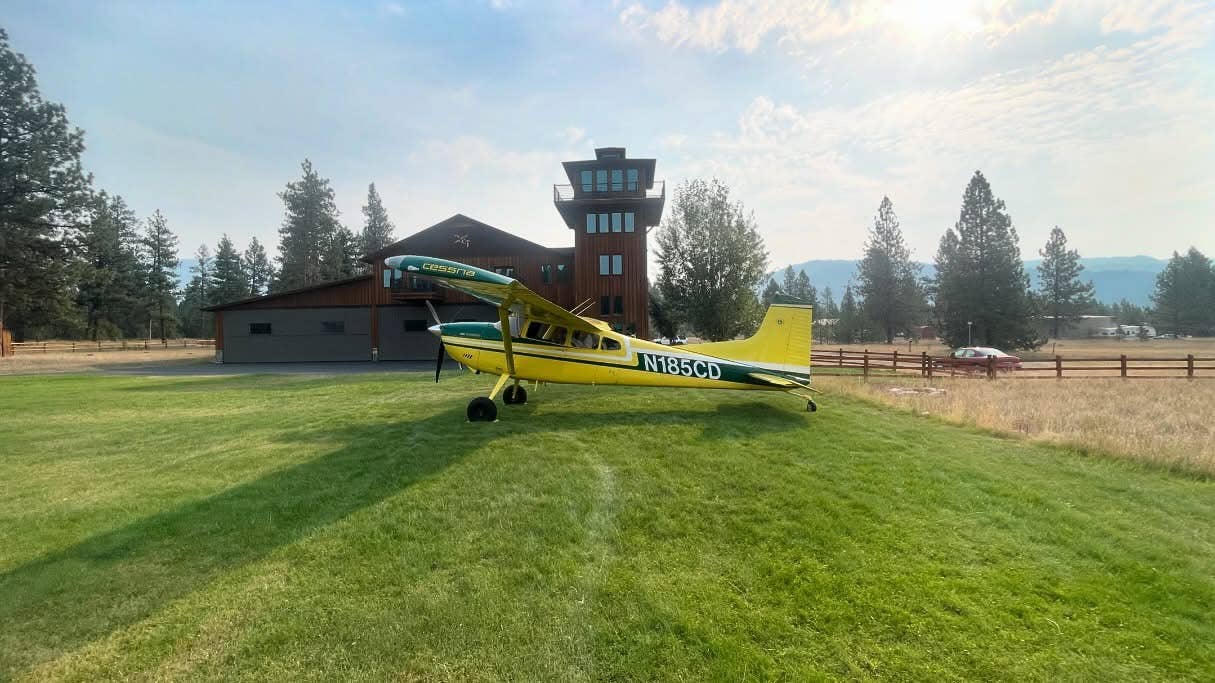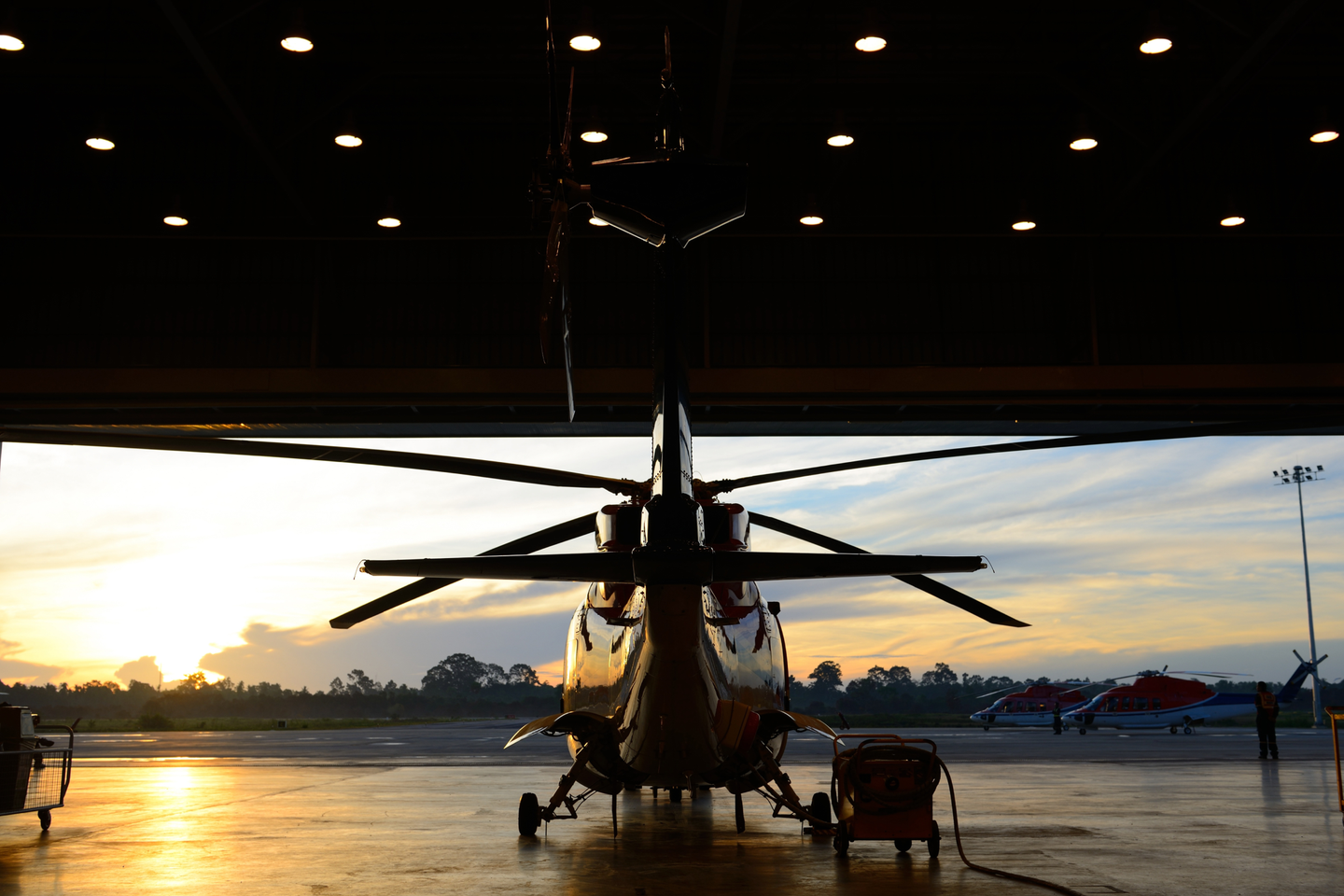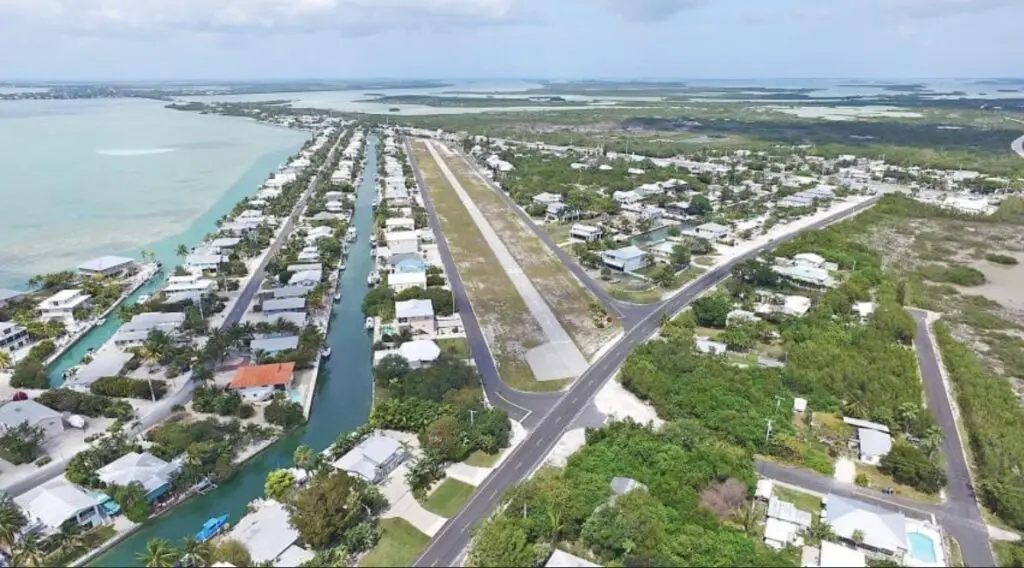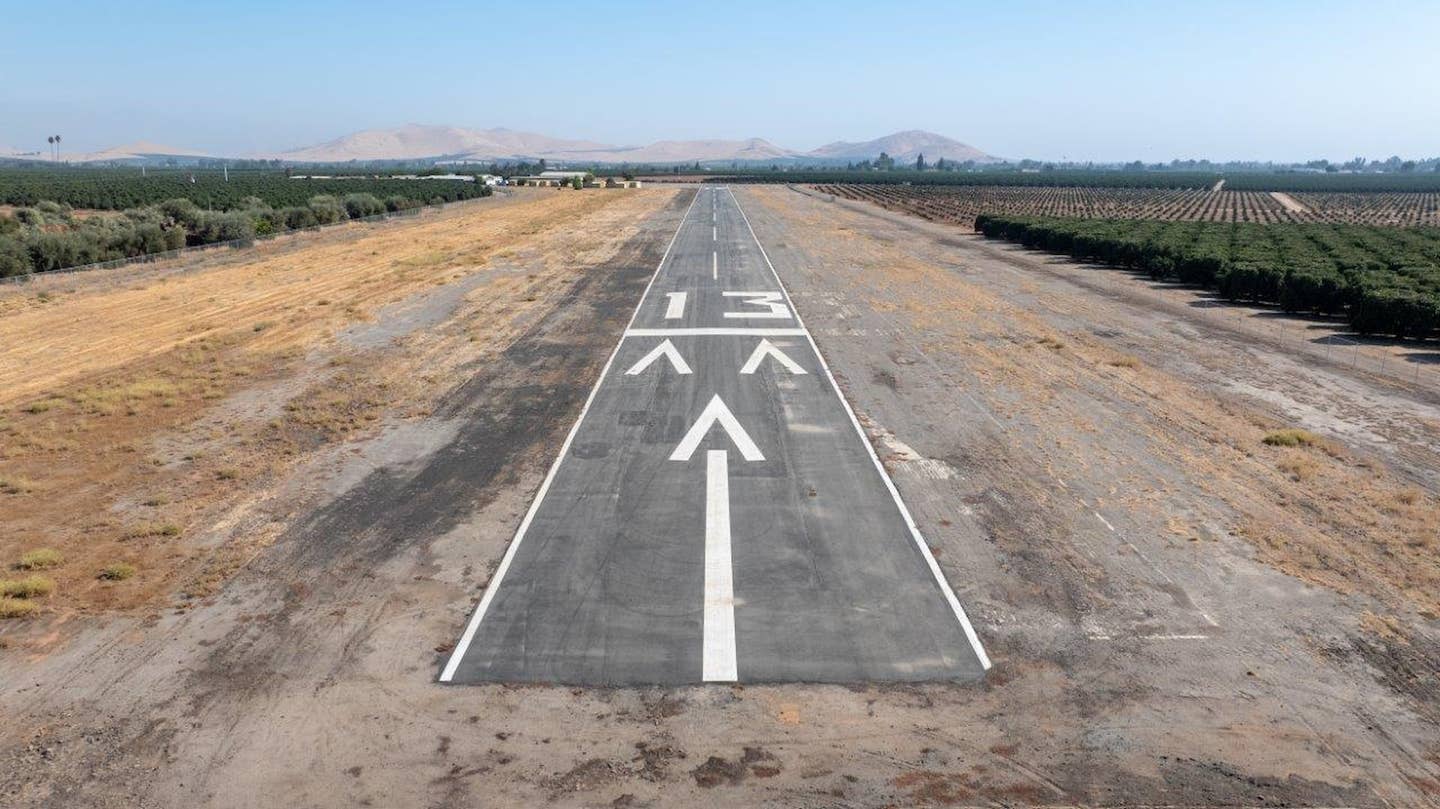Luxury General Aviation Airport Project Overcomes Limits
San Carlos Airport near the San Francisco Bay Area offers high-end amenities despite geographic constraints.
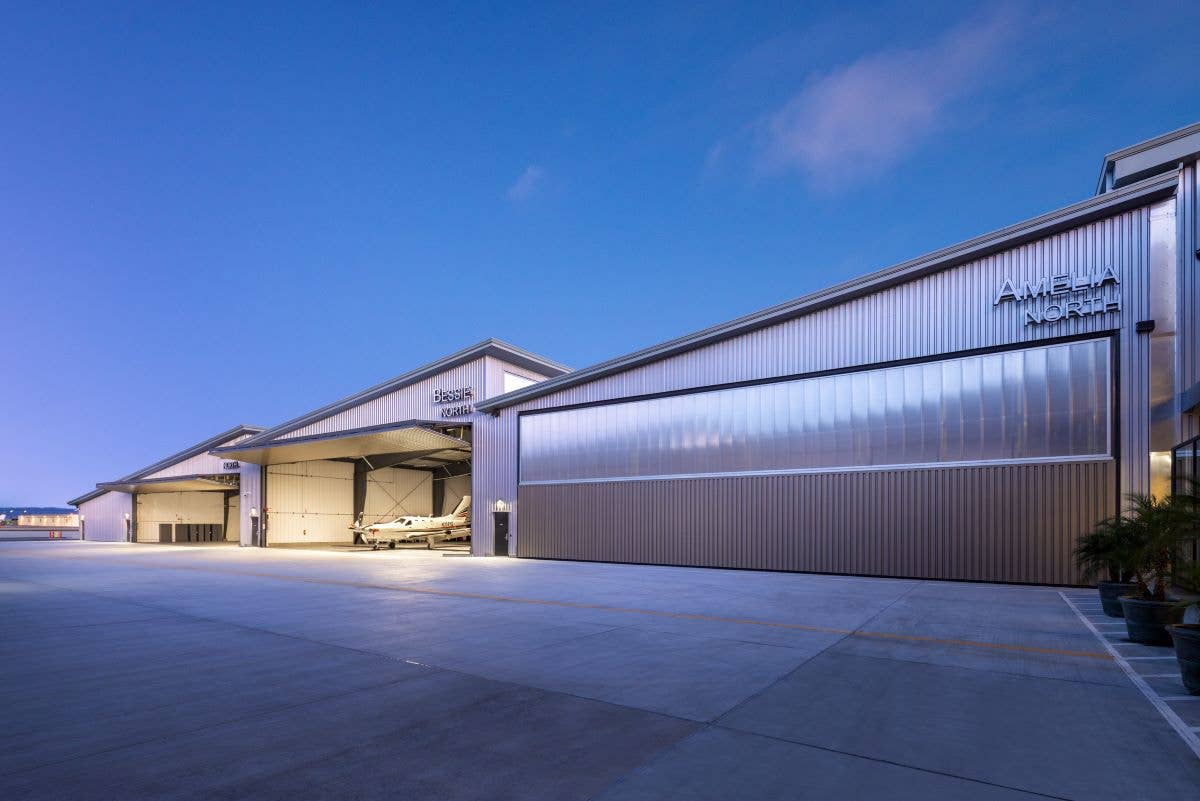
Some of Skyway Center’s hangars are named after famous aviatrixes. [Credit: Marcell Puzsar/ brightroomSF.com]
San Carlos Airport (KSQL) is special. The airport not only sits in a picturesque location in the San Francisco Bay Area but also boasts a number of strategic infrastructure investments that have created a high-end general aviation experience.
The investments include nearly 50,000 square feet of new hangar space and another 22,000 square feet of common area, office space, and meeting rooms.
All of this work was completed in spite of KSQL’s natural limitations, which some would say could have made the ambitious project a nonstarter. Because of the surrounding geography, the airport’s 2,621-foot-long asphalt runway cannot be extended. Even with the relatively short operating confines, the publicly owned airport is bustling with activity and boasts a growing tenant list of owner-flown airplanes. FAA records indicate that there are presently several hundred aircraft based at San Carlos Airport.
Skyway Center
From the initial due diligence stages, Douglas Wilson, president and senior partner of FBO Partners, was confident that the Skyway Center would be a one-of-a-kind, timeless development. Wilson immediately expected that this undertaking would be the perfect solution to meet the needs of discerning pilots looking to base their aircraft between San Francisco and San Jose, California.
“Skyway Center is really unique in aviation real estate for one reason. It [sits] on fee simple property,” Wilson said. “This means that it is not on leased airport land like almost every other parcel adjacent to an airport in the United States. Fee simple land with a through-the-fence agreement means that the ground is owned privately. [That makes a difference, because] typically at the end of a lease term, all of the improvements—$20-plus million dollars of them—[would] revert back to the airport.
“In this case, residual is always there. Fee simple land allowed for the construction of such a general aviation facility that otherwise may not have made sense had it been on a short-term, twenty-year lease.”
Luxury Hangars
This luxury general aviation hangar project was decades in the making, said Martin Eisenberg, an attorney who had long been involved with the property. Eisenberg provided a brief overview of the entrepreneur who bought the speculative land investment that would ultimately become Skyway Center.
“Sydney Levin was born in 1923 here in San Mateo County,” said Eisenberg. “Alongside his wife, Zelda, he operated a bar nearby for many years and really became entrenched in the San Carlos business community. He was also involved in the [auto]wrecking business and for many, many years he ran San Carlos Auto Wreckers, which was situated on property just to the east of U.S. 101 near the airport. He then decided to buy some additional property out there, which adjoined the airport. His friends would ask him why he bought that land, because it wasn’t good for anything really but growing corn and having some wrecked cars.”
For many years, the Levins’ land adjoining San Carlos Airport served those purposes, before being leased to a third-party on a 40-year term. A small office building and several T-hangars were built by the family who had leased the property. Over time, the hangars and offices built by the third-party began to fall into disrepair. Like an airport with leased land, once the term expired in 2005, those improvements, in poor shape, reverted to the Levins. Unlike the 1960s when he first bought the land, however, the potential for something unique sparkled.
“The waiting list for hangars that were situated at San Carlos Airport was years long,” Eisenberg said. “We came to realize that this was a very unusual piece of property, and it could be developed into a world class aviation facility. But in order to do that, we needed a long-term right of entry agreement to enable aircraft to pass from this property on to the airfield.
“When Sydney Levin got the property back, there were still five or so years left on the right of entry agreement that existed with the ground lessee. We needed a long-term agreement because you can’t spend millions of dollars building an aviation facility if you are only allowed to have aircraft enter the airfield for a short period of time. I started working on this in 2011 and it took until about 2018 before I was able to pen an agreement with the county for what is essentially a 50-year, right-of-entry agreement [a 30-year agreement with four five-year options].”
With the entry agreement in hand, Eisenberg began formally outlining the vision for the property’s future. Through discussion with several parties in the aviation construction industry, it became apparent that the development’s final state would be a refined general aviation offering that was unlike others in the region.
Not for Everybody
Customer segmentation is a concept that the business ecosystem in Silicon Valley understands well. It was a focus that Wilson has found served them well in this project.
“Part of the headline is that Skyway Center is not for everybody but for those that have a very special desire for a high-end aviation experience,” he said. “General aviation, by and large when we think of it, is small airplanes, rural airports, and T-hangars. But the advent of Cirrus, in particular, brought in an entirely new and novel generation into the skies. They were appealing to an all-new demographic to join aviation.
“What that means is that people in the Bay Area, for example, are buying a brand new SR22T and learning to fly in that aircraft. And if you have a million-dollar airplane, it makes sense to store it at a high-end facility that provides a high-level, high-touch service. Many of our clients are high-net-worth individuals. They often work in technology and likely have a multimillion-dollar home. They don’t necessarily want to go to the airport, move the rusty doors on the T-hangar, and pull their back out, moving their plane out onto the ramp.”
So how does this new product at San Carlos vary from competing options?
“To an aviation tenant, Skyway Center not only rivals but, in most cases, is superior from a fit, finish, and experience level, to even a name brand, high-end FBO," Wilson said. "We offer community hangars, as well as private and semi-private hangars. All tenants have access to the Aviators’ Club, as we call it. The club is encompassed within a glassed-in area, where you can look at the entire central aviation ramp outside the building. That area is exclusive to aviation tenants. In addition to gigabyte high-speed Wi-Fi, there are workspaces, a true lounge with leather furniture and large-screen television, a full kitchen sans range, and golf club type wooden lockers—perfect for storing your headset or wine for a post-flight celebratory drink. This offering has been very well received by pilots.”
Aviators have also been pleased by the care that went into the design of the hangars at the Skyway Center. Wilson explained that the major value proposition for these spaces is that they are “pristine…squeaky clean, bone dry, bright, modern, secure, comfortable, and convenient.”
“To summarize the space, there is community hangar storage,” he said. “This rents for about $2,000 per month for single-engine airplanes, roughly. There is also semi-private storage, which is a 5,000 square foot hangar—about $14,000 per month. And then you have the small private hangars that each have one airplane per hangar, which are about $7,000 per month.”
A noteworthy aspect of the development is that each hangar is atypically named after a famous aviatrix, rather than letters. So instead of “A, B, C, D,” and so on, the hangars are named Amelia Earhart, Bessie Coleman and Christa McAuliffe, among others. The homage to female pilots is evident not only in this naming convention but also the Skyway Center’s commitment to the Women in Aviation International organization. Wilson said his group helps to endow an annual $5,000 scholarship, the Skyway Center Aviatrix Scholarship that is administered through this group.

Sign-up for newsletters & special offers!
Get the latest FLYING stories & special offers delivered directly to your inbox



